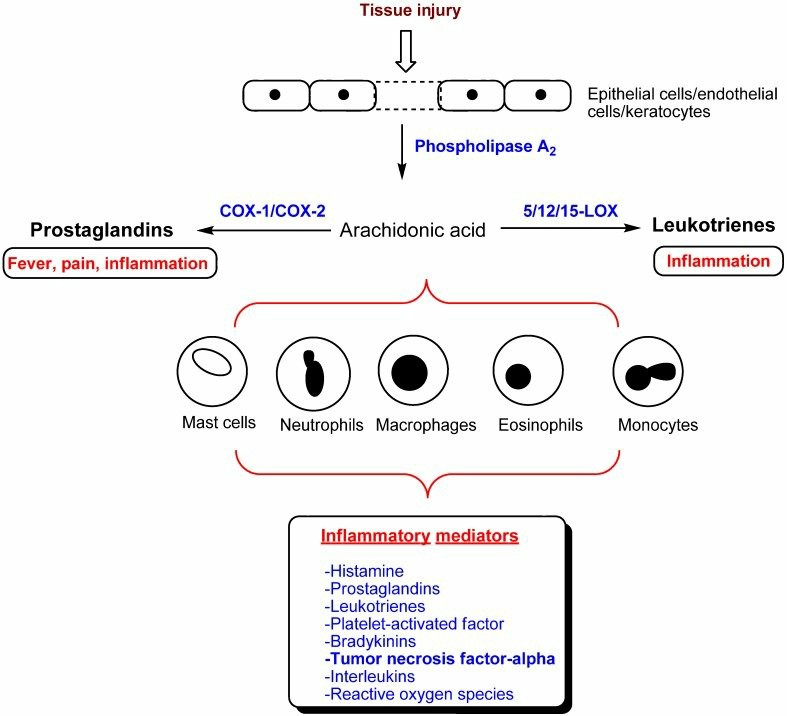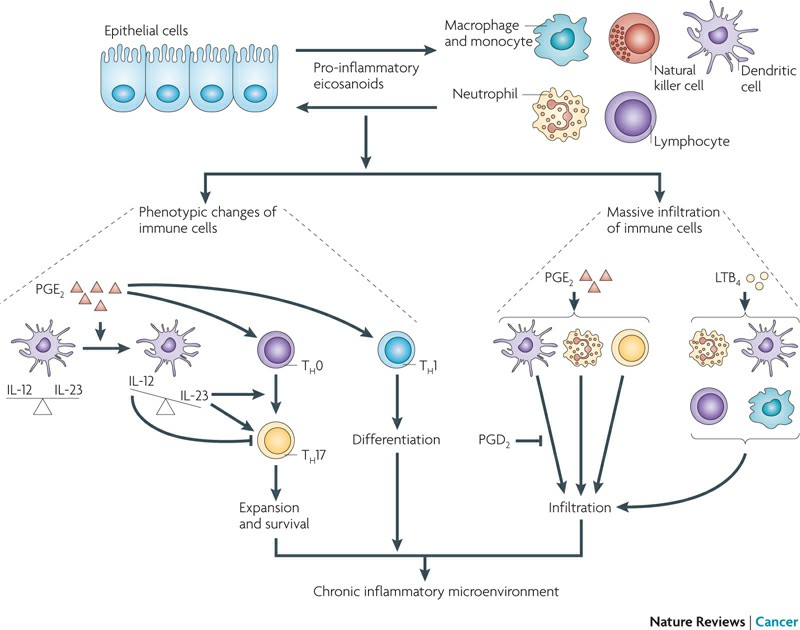Inflammatory Mediators
- CRP
- LBP
- PLA2G4A
- PTX3
- GPNMB
- TREM1
- FPR3
- CSF1
- IL-4
- TLR4
- PF4
- CXCL9
- IL-10
- CD14
- S100A8
- TNFRSF11A
- Il6
- Tgfb1
- TGFB2
- VEGFA
- IDO1
- HPGDS
- PTGDS
- LTA4H
- IL1B
- CCL2
- IL2
- IL22
- Elane
- IRAK4
- ALOX5AP
- MIF
- ADAM17
- ADORA1
- IL1R2
- IL23A
- RELA
- IL1RAP
- Integrin beta 1
- MMP-2
- MMP7
- MMP-9
- TNFRSF1A
- ADORA2A
- AEBP1
- RAGE
- AIMP1
- AMBP
- ANGPT1
- Angpt2
- PLUNC
- CD157
- C1QL1
- CCL3
- CCL4
- CCL4L1
- CCL7
- CCL8
- CMA1
- CNPY3
- CXCL1
- Cxcl2
- CXCL3
- DEFA1
- DEFB103A
- EDN1
- EDN2
- EDN3
- EDNRB
- EGF
- FSTL1
- GAS6
- HMOX1
- HNMT
- NFKBIB
- IL22RA1
- IL32
- Il5
- ITFG1
- LCN1
- MAP3K7
- MCT1
- MCTS1
- MFGE8
- MST1
- MSP
- MYC
- NDFIP1
- NOX4
- PADI4
- PDGF-B
- PDGFRA
- PDGFRB
- PLA2G7
- PLAT
- Urokinase
- PRAP1
- PRDX1
- PRDX3
- PRDX6
- PRTN3
- PTGFRN
- RARRES2
- S100A1
- S100A10
- S100A11
- S100A12
- S100A13
- S100A2
- S100A4
- S100A6
- S100A7
- Uteroglobin
- Serpina3n
- SIRPA
- TFPI
- TGM2
- TIMP-1
- TIMP2
- TIMP3
- TIMP4
- TINAGL1
- TLR2
- TNFAIP6
- DcR3
- TNFSF10
- TRAF1
- TRMT112
- VIP
- VSIG1
- VSIG2
- VSIG4
Available Resources for Inflammatory Mediators
Creative BioMart is committed to being at the forefront of research in the field of inflammatory mediators, continuously updating our product portfolio and resources to provide researchers with the latest tools and information, driving progress in this important area of knowledge.
- Our diverse product portfolio encompasses recombinant proteins and other essential items, serving as critical aids in unraveling the functions and mechanisms of inflammatory mediators.
- With a team of seasoned experts deeply versed in inflammatory mediators research, we are committed to tailoring solutions to address the unique requirements of each researcher.
- Furthermore, we offer comprehensive resource support encompassing involved pathways, protein functions, interacting proteins, and other valuable information. These resources are designed to empower researchers to gain a holistic understanding of the interplay between inflammatory mediators and diseases, ultimately elevating the impact of their research endeavors.
Our Featured Products
- Recombinant Human CRP protein, His-tagged
- Recombinant Mouse Crp, His tagged
- Recombinant Rat Crp, His tagged
- Recombinant Human LBP protein, His-tagged
- Recombinant Human PLA2G4A, GST-tagged
- Recombinant Human PTX3 protein, His-tagged
- Recombinant Human GPNMB protein, His-tagged
- Recombinant Human TREM1 protein(Met1-Arg200), His-tagged
- Active Recombinant Human CSF1 protein, His-tagged
- Recombinant Chicken CSF1 Protein
- Recombinant Human TLR4, His tagged
- Active Recombinant Human TGFB1
- Recombinant Human PF4, GST-tagged
- Active Recombinant Human VEGFA
- Active Recombinant Human IDO1 protein
- Active Recombinant Human LTA4H protein, His-tagged
- Recombinant Human IL1B, GST-tagged
- Active Recombinant Human CCL2 Protein, His-tagged
- Active Recombinant Human IL2
- Recombinant Human IL22, GST-tagged
- Active Recombinant Human MIF
- Recombinant Human CXCL9, His-tagged
- Recombinant Cynomolgus Monkey CXCL9 Protein
- Recombinant Human CD14 protein, hFc-tagged
- Recombinant Human S100A8, GST-tagged
- Active Recombinant Human TNFRSF11A protein, hFc-tagged
- Recombinant Human IL6 protein
- Recombinant Human ADORA1, GST-tagged
- Recombinant Human IL1R2 protein, Fc-tagged
- Recombinant Human RELA Protein, GST-tagged
- Recombinant Human IL1RAP, His-tagged
- Recombinant Mouse Itgb1 protein, His-tagged
- Recombinant Human MMP2 protein, GST-tagged
- Recombinant Human MMP7, Fc tagged
- Active Recombinant Mouse MMP9 protein, His-tagged
- Recombinant Mouse Tnfrsf1a, His tagged
- Recombinant Mouse Aebp1 protein, His/sumo-tagged
- Recombinant Human SCYE1, GST-tagged
- Recombinant Human VSIG4, His tagged
- Recombinant Human TNFAIP6, His-tagged
- Recombinant Human TIMP2 protein, hFc-tagged
- Recombinant Human TFPI protein, His-tagged, Biotinylated
- Recombinant Human S100A4, GST-tagged
- Recombinant Human SCGB1A1 protein, His-tagged
- Recombinant Human PRTN3 protein, His-tagged
- Recombinant Human S100A1, GST-tagged
Whether you are studying the role of inflammatory mediators in inflammation, disease pathology, drug discovery, or therapeutic development, Creative BioMart is here to support your research. We are committed to helping you achieve your scientific goals and make meaningful contributions to the field of inflammatory mediator research. Contact us today to learn more about our products and resources.
About Inflammatory Mediators
Inflammatory mediators are diverse molecules that are produced and released by various cells of the immune system and other cell types in response to infection, injury, or other inflammatory stimuli. These mediators play crucial roles in initiating, amplifying, and resolving the inflammatory response. Here is an introduction to some important inflammatory mediators:
Pro-inflammatory cytokines
- Examples: Tumor necrosis factor-alpha (TNF-alpha), interleukin-1 (IL-1), interleukin-6 (IL-6), interleukin-8 (IL-8).
- Functions: Pro-inflammatory cytokines are key regulators of inflammation. They promote the activation and recruitment of immune cells to the site of inflammation, stimulate the production of other inflammatory mediators, enhance vascular permeability, and induce fever and systemic acute phase responses.
Chemokines
- Examples: CCL2 (also known as monocyte chemoattractant protein-1, MCP-1), CXCL8 (also known as interleukin-8, IL-8), CCL5 (also known as regulated on activation, normal T cell expressed and secreted, RANTES).
- Functions: Chemokines are small proteins that regulate the migration and positioning of immune cells. They attract immune cells to the site of inflammation, facilitate their adhesion to blood vessels, and guide their movement within tissues during immune responses.
Lipid mediators
- Examples: Prostaglandins, leukotrienes, lipoxins.
- Functions: Lipid mediators are derived from arachidonic acid and other fatty acids. They have diverse effects on the immune system and inflammation, including regulation of vascular permeability, leukocyte migration, immune cell activation, and pain sensation.
Acute phase proteins
- Examples: C-reactive protein (CRP), fibrinogen, serum amyloid A (SAA).
- Functions: Acute phase proteins are produced by the liver in response to inflammation. They modulate the immune response, participate in tissue repair, and assist in the clearance of pathogens and damaged cells.
Reactive oxygen species (ROS) and reactive nitrogen species (RNS)
- Examples: Superoxide anion (O2-), hydrogen peroxide (H2O2), and nitric oxide (NO).
- Functions: ROS and RNS are produced by immune cells, such as neutrophils and macrophages, as part of their antimicrobial and inflammatory activities. They can damage pathogens and host tissues, contributing to the inflammatory response.
Complement system components
- Examples: C3a, C5a, C5b-9 (membrane attack complex).
- Functions: The complement system is a group of proteins that play a role in immune defense and inflammation. Complement components can activate immune cells, enhance vascular permeability, and promote the clearance of pathogens.
These are just a few examples of the many inflammatory mediators involved in the complex network of immune responses and inflammation. The production and actions of these mediators are tightly regulated to ensure an appropriate immune response and resolution of inflammation. Dysregulation of inflammatory mediators can contribute to the pathogenesis of various inflammatory diseases. Understanding the roles and interactions of these molecules is crucial for designing targeted therapies aimed at modulating immune responses and managing inflammatory conditions.
 Fig.1 A simplified diagram of the inflammatory pathway and its mediators. (Rao PP, et al., 2010)
Fig.1 A simplified diagram of the inflammatory pathway and its mediators. (Rao PP, et al., 2010)
The Role of Inflammatory Mediators in Different Diseases
Inflammatory mediator function to recruit immune cells to the site of inflammation, promote tissue repair, and eliminate pathogens. Here are some examples of diseases in which inflammatory mediators have a significant role:
- In Rheumatoid arthritis (RA), inflammatory mediators like tumor necrosis factor-alpha (TNF-α), interleukin-1 (IL-1), and IL-6 are involved. These mediators promote inflammation in the synovial joints, resulting in joint destruction and cartilage damage.
- In asthma, inflammatory mediators like histamine, leukotrienes, and prostaglandins are released in response to allergens or irritants. These mediators cause airway inflammation, bronchoconstriction, and mucus production, leading to asthma symptoms such as wheezing and shortness of breath.
- In inflammatory bowel disease (IBD), including Crohn's disease and ulcerative colitis, inflammatory mediators such as TNF-α, IL-1, and IL-6 contribute to chronic inflammation in the gastrointestinal tract. This inflammation leads to symptoms like abdominal pain, diarrhea, and ulceration.
- Inflammation plays a crucial role in the development of atherosclerosis, which is the buildup of plaque in the arteries. Inflammatory mediators like C-reactive protein (CRP), IL-6, and TNF-α promote the recruitment of immune cells to the arterial walls, causing inflammation and the formation of atherosclerotic plaques.
- Psoriasis is a chronic skin disease characterized by red, scaly patches. Inflammatory mediators like TNF-α, IL-17, and IL-23 contribute to the abnormal growth and activation of skin cells, leading to the formation of psoriatic plaques.
- In allergic rhinitis or hay fever, allergens trigger an immune response leading to the release of inflammatory mediators such as histamine, leukotrienes, and prostaglandins. These mediators cause symptoms such as nasal congestion, sneezing, itching, and runny nose. They also promote the recruitment of other immune cells, leading to the chronic inflammation seen in allergic rhinitis.
In cancer, chronic inflammation has been linked to the development and progression of various types of tumors. Inflammatory mediators, such as cytokines and chemokines, are released by immune cells in response to tissue damage or infection. These mediators can activate immune cells, promote the recruitment of immune cells to the site of inflammation, and stimulate the production of reactive oxygen species and nitric oxide, which can damage DNA and other cellular components. Inflammatory mediators can also activate signaling pathways in cancer cells that promote cell proliferation, invasion, angiogenesis (formation of new blood vessels to supply tumor), and resistance to cell death. For example, IL-6 has been shown to promote cancer cell survival and resistance to chemotherapy.
 Fig.2 Prostaglandins and leukotrienes are key pro-inflammatory mediators in orchestrating crosstalk between tumour epithelial cells and immune cells. (Wang D, et al., 2010)
Fig.2 Prostaglandins and leukotrienes are key pro-inflammatory mediators in orchestrating crosstalk between tumour epithelial cells and immune cells. (Wang D, et al., 2010)
During the initiation of epithelial tumours or chronic inflammation, transformed or normal epithelial cells and tissue-resident immune cells locally secrete pro-inflammatory prostaglandins and leukotrienes such as prostaglandin E2 (PGE2) and leukotriene B4 (LTB4), which recruit large numbers of immune cells from the circulation into the mucosa and reprogramme the immune cells into pro-inflammatory leukocytes.
- In infectious diseases, when an infection occurs, immune cells release inflammatory mediators to recruit more immune cells to the site of infection and promote the destruction of pathogenic microorganisms. Cytokines released during an infection can enhance the function of immune cells and activate the adaptive immune response, leading to the production of specific antibodies and T cells targeting the pathogen. Inflammatory mediators can also regulate the inflammatory response by promoting the activation of pro-inflammatory or anti-inflammatory pathways, depending on the specific infection.
References:
- Rao PP, Kabir SN, Mohamed T. Nonsteroidal Anti-Inflammatory Drugs (NSAIDs): Progress in Small Molecule Drug Development. Pharmaceuticals (Basel). 2010;3(5):1530-1549. Published 2010 May 14. doi:10.3390/ph3051530.
- Wang D, Dubois RN. Eicosanoids and cancer. Nat Rev Cancer. 2010;10(3):181-193. doi:10.1038/nrc2809


